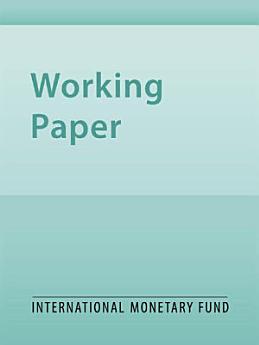Monetary Policy and Balance Sheets
Ms.Deniz Igan · Alain N. Kabundi · Mr.Francisco Nadal De Simone · Ms.Natalia T. Tamirisa
កក្កដា 2013 · International Monetary Fund
សៀវភៅអេឡិចត្រូនិច
38
ទំព័រ
reportការវាយតម្លៃ និងមតិវាយតម្លៃមិនត្រូវបានផ្ទៀងផ្ទាត់ទេ ស្វែងយល់បន្ថែម
អំពីសៀវភៅអេឡិចត្រូនិកនេះ
This paper evaluates the strength of the balance sheet channel in the U.S. monetary policy transmission mechanism over the past three decades. Using a Factor-Augmented Vector Autoregression model on an expanded data set, including sectoral balance sheet variables, we show that the balance sheets of various economic agents act as important links in the monetary policy transmission mechanism. Balance sheets of financial intermediaries, such as commercial banks, asset-backed-security issuers and, to a lesser extent, security brokers and dealers, shrink in response to monetary tightening, while money market fund assets grow. The balance sheet effects are comparable in magnitude to the traditional interest rate channel. However, their economic significance in the run-up to the recent financial crisis was small. Large increases in interest rates would have been needed to avert a rapid rise of house prices and an unsustainable expansion of mortgage credit, suggesting an important role for macroprudential policies.
វាយតម្លៃសៀវភៅអេឡិចត្រូនិកនេះ
ប្រាប់យើងអំពីការយល់ឃើញរបស់អ្នក។
អានព័ត៌មាន
ទូរសព្ទឆ្លាតវៃ និងថេប្លេត
ដំឡើងកម្មវិធី Google Play Books សម្រាប់ Android និង iPad/iPhone ។ វាធ្វើសមកាលកម្មដោយស្វ័យប្រវត្តិជាមួយគណនីរបស់អ្នក និងអនុញ្ញាតឱ្យអ្នកអានពេលមានអ៊ីនធឺណិត ឬគ្មានអ៊ីនធឺណិតនៅគ្រប់ទីកន្លែង។
កុំព្យូទ័រយួរដៃ និងកុំព្យូទ័រ
អ្នកអាចស្ដាប់សៀវភៅជាសំឡេងដែលបានទិញនៅក្នុង Google Play ដោយប្រើកម្មវិធីរុករកតាមអ៊ីនធឺណិតក្នុងកុំព្យូទ័ររបស់អ្នក។
eReaders និងឧបករណ៍ផ្សេងទៀត
ដើម្បីអាននៅលើឧបករណ៍ e-ink ដូចជាឧបករណ៍អានសៀវភៅអេឡិចត្រូនិក Kobo អ្នកនឹងត្រូវទាញយកឯកសារ ហើយផ្ទេរវាទៅឧបករណ៍របស់អ្នក។ សូមអនុវត្តតាមការណែនាំលម្អិតរបស់មជ្ឈមណ្ឌលជំនួយ ដើម្បីផ្ទេរឯកសារទៅឧបករណ៍អានសៀវភៅអេឡិចត្រូនិកដែលស្គាល់។




